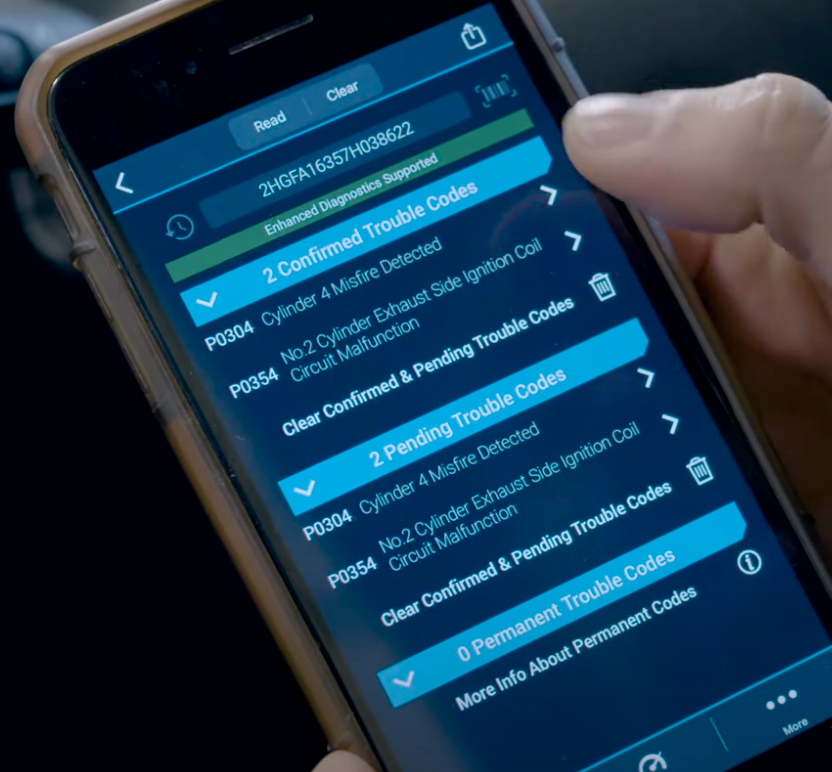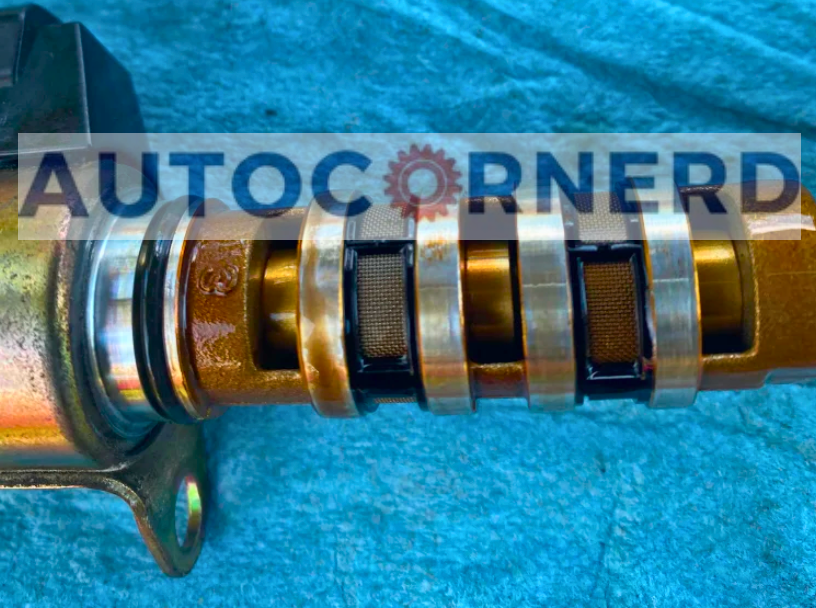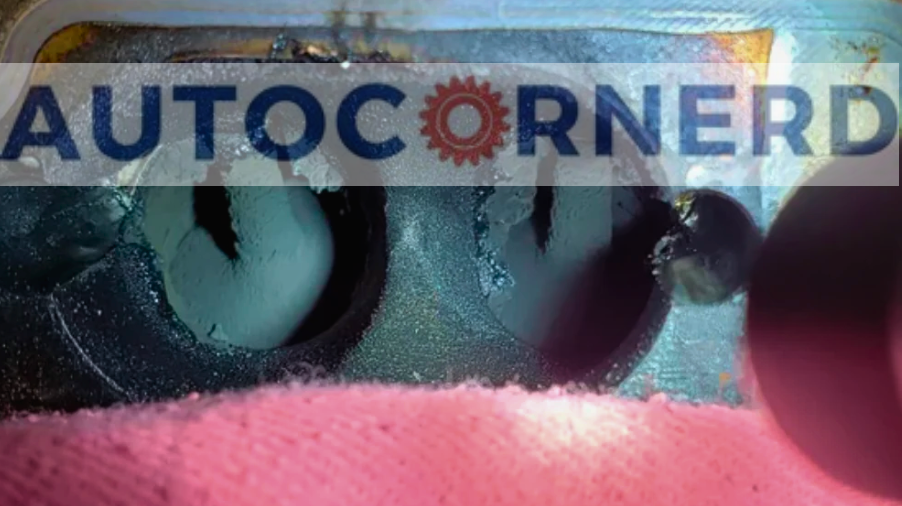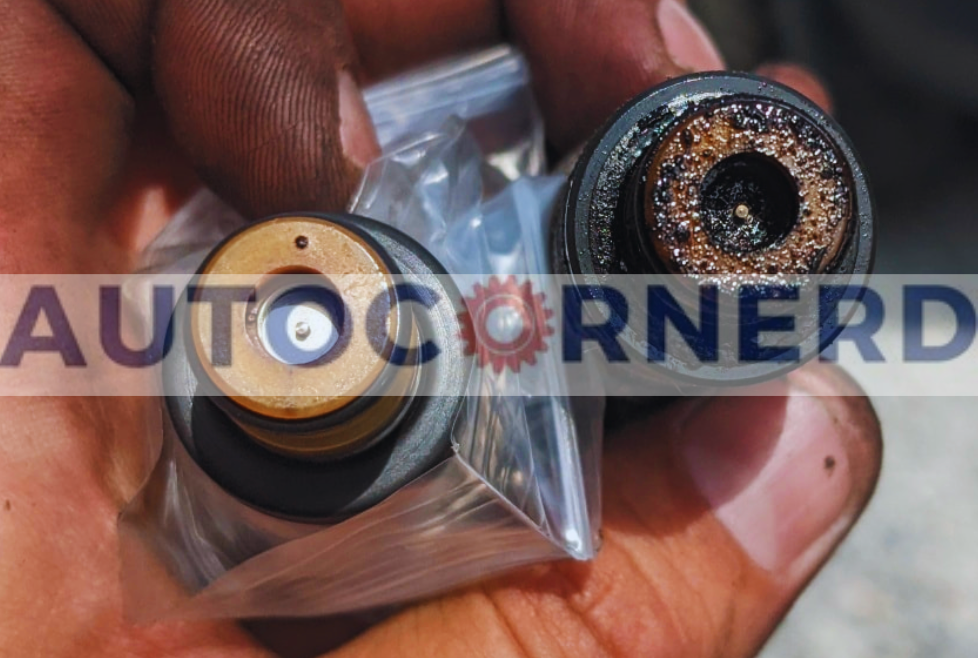Why Is My Check Engine Light Blinking Then Goes Away?
When you start your car, check engine light flashes due to a transient misfire which may occur because of temporary issues like fuel injector clogs, camshaft solenoid blockages, or carbon buildup on intake valves. As the engine warms up, these issues often resolve and the light stops flashing. Thoroughly diagnosing codes can pinpoint causes like bad sensors, failing parts, or leaks. Proactive maintenance with quality gas and oil, replacing deteriorated components, addressing vacuums leaks, and regularly cleaning valves helps prevent recurrence.
Ever turn the key and see your check engine light blinking? Annoying, right? Don’t stress – a flashing light usually just means there’s a misfire somewhere. We’ll walk through some useful solutions of how you can fix the problem of a blinking check engine light on startup.
If you want to get a quick answer, you can also chat with a virtual mechanic for free.
I’ve made an interactive tool for you guys to assist in troubleshooting vehicle issues. It leads you through simple steps. Ensure to check it out.
You can also read my guide on causes of shaking car with a flashing check engine light.
- Intermittent misfires due to issues that resolve as the engine warms up, such as clogged fuel injectors, blocked camshaft solenoids, or carbon buildup on intake valves.
- If misfires are random and not limited to a specific cylinder, a faulty oxygen sensor, vacuum leak, or loss of compression could be the reason.
- Low quality, dirty fuel and API non-certified oils promote buildup and clogs leading to cold start misfires.
- Failing camshaft solenoids prevent proper valve timing triggering roughness and shaking during startup.
- Direct injection engines are prone to carbon accumulation on intake valves which hinders cold starts.
- Fault codes pinpoint specific cylinder misfires. P0300 indicates random misfires. Further diagnosis of root causes is critical before repairs.
What is My Personal Experience With A Blinking Check Engine Light On Engine Startup?
My cousin called me about the flashing check engine light in her 2009 Toyota Camry. She said it blinked wildly on startup but then stopped. Knowing cold weather often exacerbates issues, I suspected carbon buildup was the culprit. I had her bring the Camry over and used my OBDII scanner to read the codes.
P0301 confirmed a misfire in cylinder 1. Using a borescope, I inspected the intake valves and found significant carbon accumulation. To address this, I used a can of CRC intake valve cleaner. I let it soak for 15 minutes before starting the car.
The cleaning process burned off the carbon. I also changed the PCV valve as it was also clogged with carbon. The Camry started smoothly after that with no more flashing check engine light.
Some First Hand Experiences Shared By Users In Different Communities
Our team conducted research across various online communities, forums, and subreddits to gather user comments and opinions on “blinking check engine light on startup then stops”.
User 1 says:
Had this issue in my 2020 Voyager. The check engine light would flash and then go off randomly. It was a software glitch in the ECU. Dealership updated the firmware and it’s been fine since.
User 2 says:
My 2019 HR-V had the same problem. Took it to the dealer and they found out it was a loose gas cap causing the light to flash. Tightened it and the light stopped.
User 3 says:
Encountered this in my 2018 Giulietta. The engine light flashed briefly several times. Diagnostic showed it was a failing fuel injector. Got it replaced, no more flashing.
User 4 says:
Experienced this in my 2015 Fiesta. Engine light would flash then disappear. It was an intermittent issue with the ignition coil. Once replaced, the problem was solved.
User 5 says:
Had a brief check engine light flash in my 2018 Mirage. Thought it was a fluke, but then it happened again a week later. Turns out it was a faulty O2 sensor. Replaced it and no more flashing lights.
User 6 says:
Saw this happen in my new Kia Seltos. Scanned it and it showed a misfire in one of the cylinders. Changed the spark plugs and the issue was resolved.
Check OBDII Codes If Check Engine Light Blinks During Startup
The interface between the scan tool and your car’s engine control module is the OBDII port, typically found under the dash on the driver’s side.
Although cheap scanners are available, I highly recommend the BlueDriver Bluetooth scanner. It connects to both Android and iPhone, packed with useful features.
Even a momentary cold start check engine light warrants checking codes stored in memory. Once plugged in, the BlueDriver scans and provides a code description, an invaluable starting point for sleuthing.

Misfire trouble codes follow a ‘P030X’ format, the ‘X’ denoting the cylinder. Thus, P0301 means a misfire in cylinder one. P0300 signals random misfires, not isolated. This could stem from O2 sensor problems, vacuum leaks, or lost compression.
It’s common to assume replacing the plug or coil will fix a cylinder misfire. But causes abound, like clogged injectors, blown head gasket, worn piston rings, damaged valve spring, or faulty cam solenoid. Thorough investigation is crucial to pinpoint the root problem for effective repair. Don’t just throw parts at it.
Why Does Misfire Occur In Engine?
A misfire can happen in the engine cylinders due to the following reasons:
- The spark timing may be wrong: The spark timing is very important for combustion. It is the exact moment when the spark plug lights the fuel mixture in the cylinder. If the spark plug or its wires are damaged, it will not make a spark at the right time. This will also cause a misfire and make the car shake.
- Fuel delivery problems from bad fuel injectors or a bad fuel pressure regulator: Fuel delivery problems are another common cause of engine misfires. The fuel injectors put fuel into the engine. If fuel injectors are clogged or not working right, the engine may misfire. The fuel pressure regulator keeps the right fuel pressure in the fuel system. A faulty fuel pressure regulator can make the engine get too little or too much fuel. This results in a misfire.
- Loss of compression from a blown head gasket or poor valve timing: Loss of compression can also cause a misfire in an engine. Compression is the pressure that builds up in the combustion chamber when the piston moves up. A worn or damaged piston ring, cylinder wall, or valve can cause a loss of compression. A blown head gasket can also cause a loss of compression.
What are the Causes of Engine Light Flashes When Starting the Car?
Here are the causes of the blinking check engine that comes on engine startup then goes away:
1. Intermittent Ignition Misfires During Cold Engine Startup
Most people, who have encountered the problem of a flashing check engine light on startup, have experienced intermittent engine misfires when the engine is cold. This is also called a cold engine startup.
When you start the engine after a long time (even after 8 to 12 hours), the chances are that your vehicle will start shaking and idling rough due to engine misfire and the check engine light will also start flashing but might stop after a while.
In those cases, vehicle owners have also reported that after restarting, the check engine light goes away and the engine starts running normally.
On the engine startup after a long time, the misfire usually happens till the engine reaches its operating temperature.
Why does it happen?
The reason why misfires can happen and check engine light flashes on a cold engine startup is that in gasoline engines, there is a direct injection of fuel through fuel injectors. The fuel only burns in a certain range of temperature.
At cold engine temperature, it also narrows down the range of the burning temperature of the fuel. As a result, it will make it hard for the fuel to burn uniformly with the air.
As a result, the vehicle experiences a misfire on a cold engine startup and the check engine light starts flashing but goes away as the vehicle warms up.
How to prevent?
The oil running through your engine acts as its lifeblood. Using the manufacturer’s recommended oil ensures a smooth startup even on the coldest winter morning. Oils are tailored to an engine’s needs, with optimal additives and viscosity.
As I detail in my guides, SAE 30 and 10W-30 each serve specific purposes. High-mileage engines likewise need oils engineered to their demands. Proper oil lessens the odds of those frustrating misfires when you turn the key on a frozen January dawn.
Allow your engine a few minutes to wake up before asking it to propel you down the street. Oil flows lazily when cold. Let it circulate and warm. Give your catalytic converter time to reach its operating temperature too. A thoughtful warmup primes your engine for a trouble-free commute.
Fuel quality significantly impacts performance. Low-grade gasoline contains impurities that can cripple injectors and spark plugs. Your engine’s health depends on the purity of its food. So nourish it with high-quality fuels to keep it running clean.
2. Bad Camshaft Solenoid Causing Misfire

The camshaft solenoid is a small electric valve. It controls the oil flow to the cam phaser. The cam phaser controls the valve timing of the engine.
The solenoid is in the engine block. It connects to the computer of the engine. The solenoid controls the oil pressure to the cam phaser. This helps control the valve timing.
If the solenoid gets clogged with gunk and carbon, the oil flow is not controlled well. Then the valve timing of the engine gets disturbed. This makes the engine shake on startup. The check engine light flashes for some seconds too.
To learn more, you can read my guide on how the cam phaser goes bad.
Why does this happen?
When cold, the oil gets thick and sticky. This can clog the solenoid with debris. Then oil cannot flow well to the cam phaser. The cam phaser works wrongly. This causes a misfire on cold startup.
If the camshaft solenoid fails, oil pressure drops in the engine. This gives poor lubrication.
Poor lubrication makes the cam phaser rattle. This leads to a cold misfire. The misfire happens because the camshaft does not work right. This imbalances the cylinders.
The failed solenoid also makes the computer misread the camshaft sensor. This makes the engine misfire and run poorly on cold startup.
When warm, oil flows well through the solenoid. So the misfire stops after some seconds.
3. Carbon Deposits On Intake Valves Causing Uneven Fuel Mix

The mix of fuel and air entering the engine is key for good performance. In GDI engines, fuel gets squirted right into the combustion chamber.
This is different from old-school engines where fuel entered through the intake manifold. Direct injecting the fuel improves gas mileage, gives more horsepower, and makes less pollution.
But it also causes carbon gunk buildup. With no fuel washing the intake valves clean, carbon deposits stick over time. This carbon clogs up the airflow into the engine. The result is lower power, worse fuel economy, and dirtier emissions coming out the tailpipe.
When starting a cold engine, the carbon can stop the intake valve from closing fully. Some of the air and fuel sneaks back into the intake. This causes misfires, felt as rough idling or hesitation when hitting the gas from a stop.
The carbon buildup can also make the check engine light flash. Misfires damage the catalytic converter, increasing emissions.
As the engine warms up, the carbon starts burning off the intake valve and the misfires and flashing light stop. This is the reason why some engines shake on cold start but run fine when warmed up.
So direct injection gives better performance, but requires keeping the intake valves carbon-free. That’s the tradeoff for this newer technology.
Why does it happen?
When GDI engines were introduced, API standards for engine oils were upgraded to API SP.
So, if you have been using an engine oil that is not API SP certified, it can cause carbon buildup issues. On the bottle/tin of the engine oil, the API SP certification label should be stamped.
Moreover, if there is a crack in the valve stem seal (the arm of the valve is called the valve stem), the engine oil will leak through it and deposit on the back of the valve.

In addition, when the engine is cold, piston rings shrink a bit. The unburnt fuel vapors leak through it and accumulate in the crankcase (the place where engine oil settles).
From the crankcase, these gases route through the PCV valve and enter the engine cylinder via the air intake manifold. Most of the gases burn but some of them cake up on the valve stem.
Since in GDI engines, no gasoline flows through the air intake port, carbon will start building up.
How to fix?
Use correct viscosity grade oil and the oil meets the standards recommended by the API. Moreover, make sure that PCV (Positive crankcase ventilation) valve is not stuck open.
If the PCV valve is stuck open, excessive unburnt hydrocarbons will enter air intake manifold and produce a large chunk of carbon buildup.
Moreover, in engines, there is an air oil separator (AOS). If it has any crack, air will also carry vapors of oil with it and enter the engine. It will also cause engine misfires for a few seconds.
3. Dirty Fuel Injectors Reducing Proper Fuel Atomization

The injectors are the fuel delivery system for your engine, misting gasoline into the intake manifold where it mixes with air before getting sucked into the combustion chamber. Clean injectors are critical for even fuel atomization and proper engine operation.
Over time, fuel injectors attract dirt, rust, and gunk, getting clogged up. This is especially true if you cheap out on fuel quality, as lower-grade gas tends to have more contaminants.
Clogged injectors can’t properly meter fuel, causing the engine to run lean (too much air vs fuel). A lean condition leads to misfires – when the air/fuel mixture fails to ignite. Misfires make the engine run rough and shaky, with a smell of unburnt gas.
When cold starting, a blocked injector may not spray right, triggering a flashing check engine light. But as the engine warms and debris gets cleared, the misfire can disappear and the light stops flashing. Still, the underlying issue remains.
Don’t ignore that flashing light. Get your injectors cleaned or replaced. Your engine will thank you with smooth operation, optimal power, and reduced emissions. Prevent problems in the first place by using quality gas and fuel additives.
How to spot the cause?
To learn how to inspect fuel injectors, you can reads my guide on car won’t start after replacing fuel injectors.
Final Thoughts
A check engine light that blinks for a short time when you first start your car often happens because of small, temporary problems. These include blocked fuel injectors, stuck camshaft solenoids, or carbon buildup on the valves. As the engine warms up, these issues tend to go away on their own.
To figure out exactly why the check engine light is flashing, getting the OBD trouble codes read is very important. This will help pinpoint what’s causing the problem.
To help stop the check engine light from blinking in the future, use high-quality gasoline, API-certified motor oil, fix any leaks, and clean the intake valves regularly.
